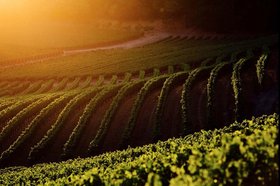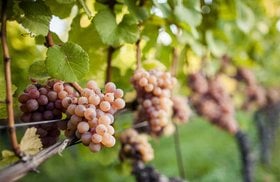Wine Flavors (Red and White Wines, Factors, How to Describe)
Ever wondered how wine that’s made with grape juice can taste of “vanilla”, “stone fruit”, “cherries”, and other magnificent wine flavors?
It’s not just the ripeness of the grape that decides a wine’s flavor. The terroir, fermentation techniques, and how the winemaker ages the wine all play an integral part.
This article explores all the fantastic flavors of your favorite red and white wines. We also look at how these wine flavors are created and how you can describe your favorite wine like a pro. (And if you want to attend exclusive tasting events while investing in fine wine, we’ll show you the easiest way to do it!)
Further reading
- Read about the lucrative world of Fine Wine Investment with our detailed guide.
- Want to find the perfect Dry Red Wine for your dinner party? Take a tour into the gorgeous Italian wine region and discover everything about Barolo Wine.
Thanks to the different techniques used by winemakers (and other factors), each wine has a unique flavor profile.
Let’s start by looking at the common wine flavors of red wine.
Common Red Wine Flavors
The most common notes in red wine varietals are black and red fruit flavors. These fruity flavors include cherry, plum, raisin, blackberry, blueberry, strawberry, and even raspberry.
But what happens with red wine blends?
Blending is a way for a winemaker to combine the red and black fruit flavors from different wine grapes. For instance, the red blends from Bordeaux are a blend of Cabernet Sauvignon, Cabernet Franc, and Merlot.
You’ll experience all the flavors from each wine grape and, once you have trained your palate, will be able to identify which wine grapes are in a blend.
Here are the most popular red wines and their flavors:
1. Cabernet Sauvignon
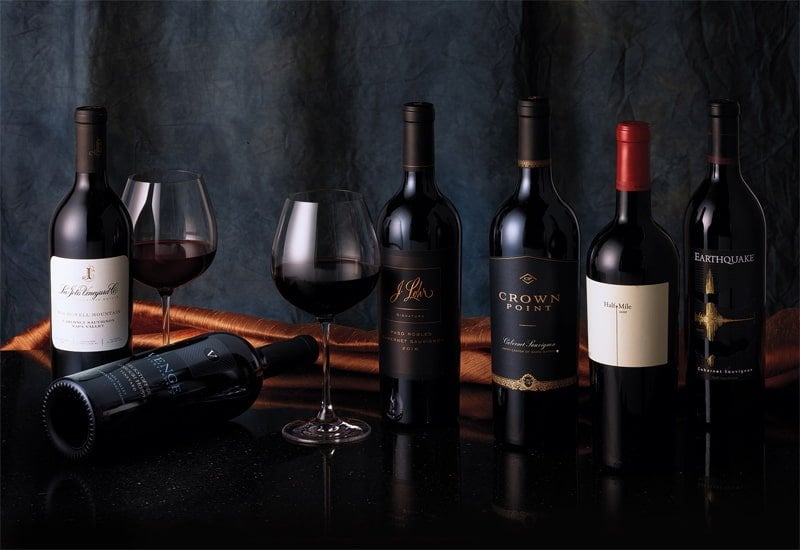
Common Flavors: Dark fruit flavors of black currants, black cherries, green peppers, oak, and baking spice
Cabernet Sauvignon dominates the popular Bordeaux blends and comes in various varietal styles as well.
This full-bodied red wine with its bold tannins is more of a dry wine than sweet wine. However, the dark fruit flavors are what give this red wine a sweet taste.
Cabernet Sauvignon is the perfect wine to drink with aged cheddar and lamb dishes.
Classy Cabernet Sauvignons for you to try:
- 1997 Screaming Eagle Cabernet Sauvignon, Napa Valley, USA: $6,213
- 2013 Ghost Horse Vineyard 'Spectre' Cabernet Sauvignon, Napa Valley, USA: $5,295
Looking for an excellent alternative for Cabernet Sauvignon?
If you want a wine with higher acidity, then a Cabernet Franc is a great alternative to Cabernet Sauvignon.
2. Merlot
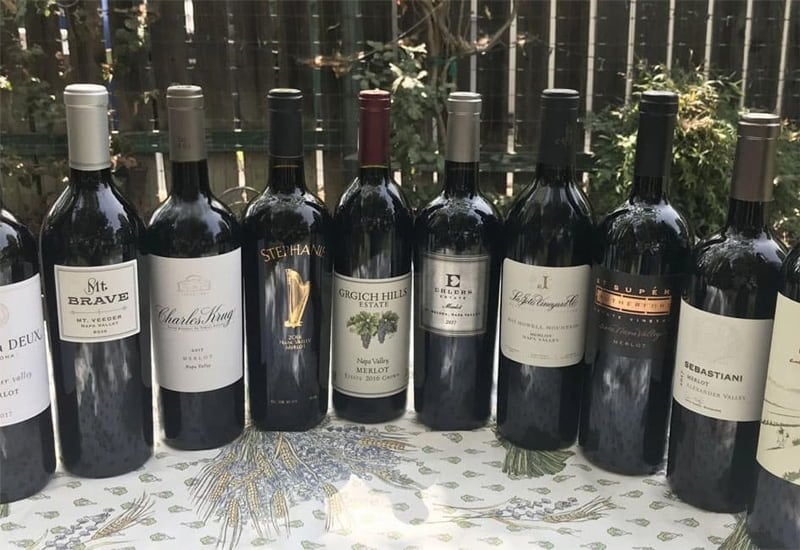
Common Flavors: Fruit flavors of blackberry, plum, black cherry, and vanilla, herbs, baking spice, clove, oak, and bitter chocolate.
The medium-high acidity, supple tannins, and 13%-15% ABV make a bottle of Merlot the perfect wine to pair with meaty dishes and cheeses that match the wine’s rich flavor.
Magnificent Merlot wines for you to try:
3. Syrah
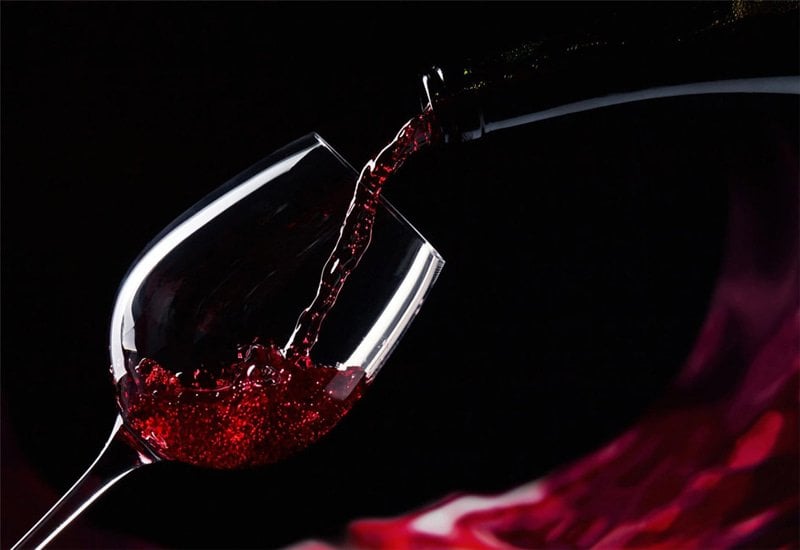
Common Flavors: Black pepper, blueberry, cured meat, tobacco, plum, and violet
Syrah is a full-bodied red wine commonly made in France’s Rhone valley and other old-world wine regions. The Syrah grape is also known as Shiraz in Australia and new world regions.
Syrah wines have various fruity flavors, making them perfect as a blending varietal in the red Rhone wine blend and fruity Rose wine.
Syrah is the ideal pairing for strong white cheddar, smoked meats, and lamb dishes.
Stunning Syrah wines for you to experience:
- 2009 Domaine Jean-Louis Chave Ermitage 'Cuvee Cathelin', Rhone, France: $9,577
- 2003 Sine Qua Non The Duel Estate Syrah, Sta Rita Hills, USA: $2,272
Want something similar to Syrah?A Malbec wine from Argentina has more black fruit flavors and a less meaty quality. Alternatively, a Pinotage from South Africa has a similar body but more intense smokey notes. A Spanish Grenache also will fit the bill.
4. Tempranillo

Common Flavors: Fruit flavors of plums, figs, tomatoes, leather, cherry, tobacco, cloves, and cedar notes
The taste profile of Tempranillo wine is heavily influenced by how long it has been aged in oak. As a result, Tempranillo wine ranges from medium to full-bodied wines and has a low-medium acidity level.
Depending on the winemaker, you could also expect heavy tannins and a noticeable acidity that will remind you of a Cabernet Sauvignon.
Tasty Tempranillo wines for you to taste:
- 2010 Teso La Monja, Toro, Spain: $1,486
- 2004 Dominio de Pingus 'Pingus', Ribera del Duero, Spain: $1,900
5. Zinfandel
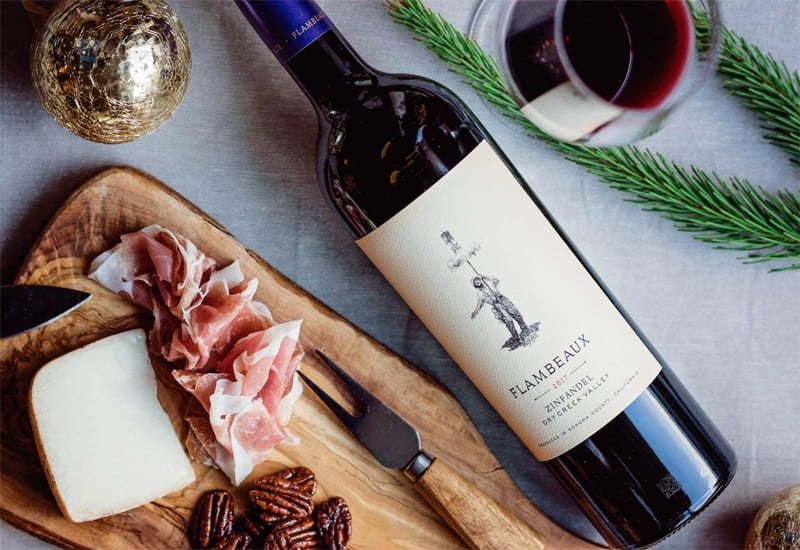
Common Flavors: Stone fruit, raspberry, sour cherry, plum, boysenberry, Asian spices, and sweet tobacco
Known as Primitivo in Italy, Zinfandel is a medium to full-bodied wine that originated in Croatia. The wines are spicy and fruity, making them perfect with Thai, Chinese, and Indian dishes.
This red grape varietal is also known for its pink variation, White Zinfandel, in California.
Exotic Zinfandel wines for you to experience:
- 2018 Martinelli Jackass Hill Zinfandel, Russian River Valley, USA: $295
- 1995 Turley Wine Cellars Hayne Vineyard Zinfandel, Napa Valley, USA: $348
Can’t find your favorite Zinfandel?
Try a Carignan wine with candied cranberry notes and a subtle fruit flavor.
6. Pinot Noir
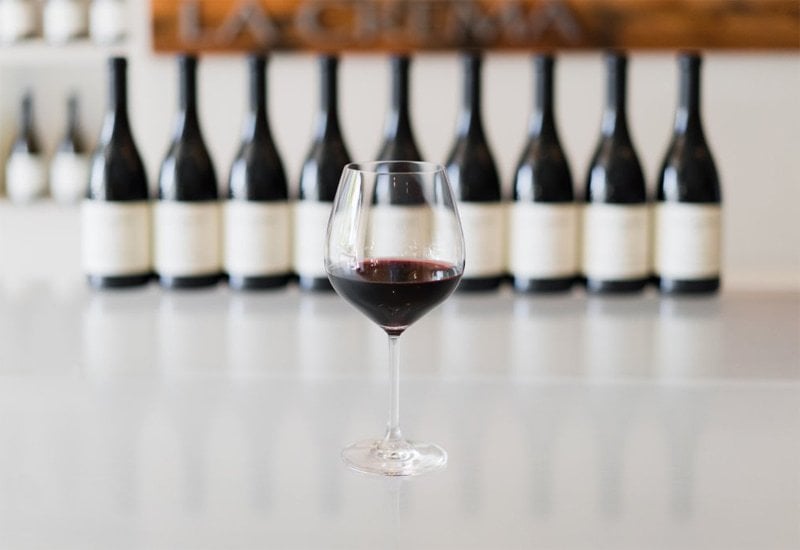
Common Flavors: Beet, cloves, cherry, cranberry, raspberries, rhubarb, roses, and mushrooms
Pinot Noir wines are dry, light-bodied wines commonly produced in France. They have high acidity with soft and smooth tannin levels. Pinot Noir is also a typical grape used to make Champagne and Sparkling wine.
The acidity in this wine makes it the perfect dry wine to pair with creamy sauces, soft cheeses, chicken, pork, and veal.
Perfect Pinot Noir wines to taste:
- 2002 Domaine Leroy Musigny Grand Cru, Cote de Nuits, France: $47,817
- 1990 Domaine de la Romanee-Conti Romanee-Conti Grand Cru, Cote de Nuits, France: $32,035
If you want to try something similar to a Pinot Noir, try the juicer Gamay or the rare Schiava wine from Italy.
Common White Wine Flavors
On the other hand, white wines have two prominent fruit flavors: citrus fruit and tree fruit.
You can expect fruity wine flavors of apple, apricot, banana, butter, citrus, kiwi, mango, melon, peach, pear, pineapple, and tropical fruit.
Flavors of the same grape variety can also change depending on the wine region. For example, a Chenin Blanc from France will have green apple fruit aromas, while the same varietal from South Africa will exhibit fruity flavors of lemons and peaches.
Let’s take a look at the common wine flavors in some of the popular white wines.
1. Chardonnay

Common Flavors: Yellow citrus fruit, pear, apple, banana, and pineapple. Sometimes you will experience flavors of butterscotch, toasted caramel, and vanilla
Chardonnay is known as the white grape of Burgundy and a popular grape variety used for Champagne and sparkling wine. It is usually a dry, full-bodied white wine,
This dry, full-bodied white wine has buttery, spicy, and bourbon notes when aged in oak and gone through malolactic fermentation. On the other hand, unoaked Chardonnay is lighter with citrus tasting notes.
Charming Chardonnay wines for you to experience:
- 2014 Domaine Leflaive Montrachet Grand Cru, Cote de Beaune, France: $20,060
- 2002 Leroy Domaine d'Auvenay Chevalier-Montrachet Grand Cru, Cote de Beaune, France: $15,315
If you can’t find a Chardonnay that suits your palate, go for a bottle of Semillon or Viognier.
2. Sauvignon Blanc
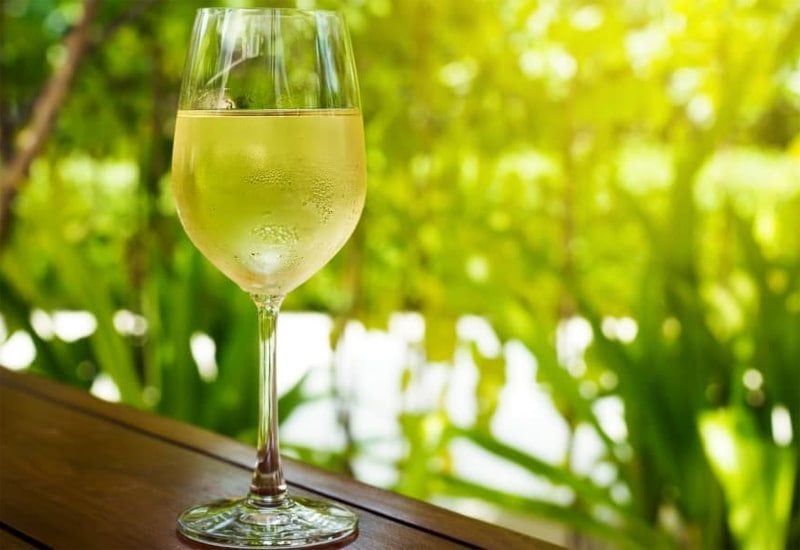
Common Flavors: Citrus, grapefruit, honeydew melon, passion fruit, kiwi, grass, mint, green pepper
Known for its “grassy” taste, Sauvignon Blanc is originally a French grape but is now grown worldwide. This light to medium-bodied white wine is the perfect pair with nutty cheeses and spicy dishes.
Stunning Sauvignon Blancs to try out:
- 2011 Screaming Eagle Sauvignon Blanc, Oakville, USA: $8,444
- 2012 Louis-Benjamin - Didier Dagueneau Pouilly-Fumé Astéroïde, Loire, France: $1,392 If you’re looking for a white wine with a less herbaceous feel, a Vermentino or a Gruner Veltliner would be a great choice!
3. Pinot Gris

Common Flavors: Lemon, orange zest, apple skin, pear sauce, and floral notes
Pinot Gris, also known as Pinot Grigio, is a delicate wine mostly found in Italy, Germany, France. This light-bodied dry white wine is an easy-drinking one and sometimes exhibits a bitter flavor on the palate.
Because this is a delicate wine, a glass of Pinot Gris pairs perfectly with delicate fish and salad.
Perfect Pinot Gris to serve at your next brunch:
- 2001 Domaine Weinbach Pinot Gris Altenbourg Quintessence de Grains Nobles, Alsace, France: $729
- 2007 Domaine Zind-Humbrecht Pinot Gris Clos Windsbuhl Selection de Grains Nobles Trie Speciale, Alsace, France: $341
If you are looking for something similar but with more acidity and citrus notes, an Albarino from Spain is a wonderful option.
4. Riesling

Common Flavors: White peach, nectarine, citrus tasting notes of lime, and lemon juice. This wine gets its sweetness from the herbal and floral elements.
Riesling wines have a high acidity level and can either be dry white wine or sweet wine. Some winemakers choose not to ferment the natural sugar, producing dry wine.
These wines go well with spicy dishes, and German Rieslings are also a great dessert wine for that after-dinner treat.
Riveting Riesling wines to serve with dinner:
- 2003 Egon Muller Scharzhofberger Riesling Trockenbeerenauslese, Mosel, Germany: $25,460
- 1990 Joh. Jos. Prum Wehlener Sonnenuhr Riesling Trockenbeerenauslese, Mosel, Germany: $7,648
If you want a less acidic wine with a more robust floral flavour profile, swap a Riesling with a bottle of Moscato made from the Muscat grape family. However, if it’s the sweetness you’re after, a bottle of Gewurztraminer is also a great substitute.
But where do these exquisite flavors and aromas come from?
Where Does A Wine’s Flavor Come From?

The majority of the wine flavors that we enjoy come from stereoisomers (aroma compounds) released during the fermentation process.
A wine can have hundreds of different aroma compounds, and each compound affects the wine’s flavor.
When you let your wine breathe, the alcohol evaporates and carries these compounds to your nose.
But, before we get into the nitty-gritty of aroma’s role in wine flavors, remember that your taste buds can only taste four basic sensations (salty, sweet, sour, and bitter.)
However, your nose can smell thousands of unique aromas, and that also influences the way you experience it’s flavor.
Let’s delve a bit deeper into the three types of aromas found in wine.
1. Primary Aromas
The primary aromas refer to the scent of the grape itself. The climate and the soil where the grape varietal is grown play a massive role in the wine aroma and the wine’s flavor.
For instance, if Cabernet Sauvignon is grown in a warmer climate, the grapes will be juicier (with notes of plums, blackberries, and raspberries) due to the grape’s exposure to the sun.
If Cabernet Sauvignon is grown in a cooler climate, it will exhibit red cherries and currant flavors.
Red grape varieties usually exhibit a red fruit flavor, while white grapes display herbaceous tones. Winemakers try to preserve the natural wine aromas during the winemaking process by avoiding oxidation.
2. Secondary Aromas
Fermentation brings secondary aromas to the wine, and these refer to the smells created during the winemaking process.
During the fermentation process, the grape juice sits with the grape skin. The yeast eats up the natural sugar from the grape and turns it into alcohol. The fermentation process also creates additional compounds.
These compounds take on a similar molecule arrangement to the familiar scents that the brain can categorize.
Alcoholic fermentation (primary fermentation) creates fruity aromatic compounds (esters.) This process typically adds layers of red and dark berries to the aroma of the wine.
Some wines go through a secondary fermentation (known as malolactic fermentation), which creates butter, cream, or yogurt notes.
Additionally, if a wine is aged in an oak barrel, it adds an aroma of smoke, sweet spices, toast, and vanilla to the wine aroma. Aging wine in an oak barrel has been around for centuries, and winemakers continue experimenting with different wood types from other regions.
3. Tertiary Aromas
The final level of a wine’s aroma comes from bottle aging. During this time, the wine’s molecules interact with the oxygen in the bottle, which over time, changes the aroma.
Describe The Taste Of Wine Like A Pro

Describing a wine goes a lot deeper than a “red wine from Burgundy” or a “sweet wine from France.”
Luckily most wine drinkers agree on the different types of wine flavor categories, even though they use different descriptors.
For instance, in a glass of Riesling wine, some wine drinkers might taste peach while others experience nectarine notes - but we’d all agree the wine has stone fruit aromas and flavors.
Luckily there are a few descriptors that are commonly known - let’s take a look.
- Sweetness: Sweetness and how it relates to a sweet wine (dessert wine) can be misunderstood. You need to decipher between the residual sugar left after fermentation and the fruit flavor of a wine. A wine can also be off-dry or medium-dry where there is just a hint of sweetness.
- Acidity: More common in white wines, acidity gives the wine a refreshing or “crisp” feel. If there is a high acidity level, the wine will taste sour, while lower acidity makes the wine taste “fat.”
- Tannin: Red wines are known for their tannin levels. A wine with high tannins is bitter and sometimes astringent. Lower tannin levels make the red wine feel soft and smooth.
- Body: This refers to the “weight” or viscosity of the wine. If you swirl a full-bodied wine in the perfect wine glass, it will coat the sides of the glass. On the other hand, a light-bodied wine will feel like drinking water, and medium-bodied wines are between the two.
- Flavor: Possibly the hardest descriptor because of the vast number of flavour descriptors. If you’re a wine lover still training your palate, stick to relatable flavor descriptors like floral, fruity, spicy, or earthy.
Now:
Suppose you’re looking to build a collection of the most exotic, investment-grade wines on the planet to experience some of these flavors.
The most hassle-free way for you to do it is through a reliable online wine investment company like Vinovest.
Here’s how:
Experience The World Of Fine Wine Investment

Vinovestis a reputed online-based wine investment company that helps wine enthusiasts buy, store, and sell fine wines from around the world.
In addition, you will have access to an extensive wine network and will be invited to private wine sales and tastings.
You’ll get the best prices for the rarest finds, and Vinovest will authenticate the wines before the money leaves your account. They will also insure and store your precious wines in professional bonded warehouses that are monitored 24/7.
And if you choose to sell or open your bottle of Screaming Eagle Cabernet Sauvignon or Cristal Rose wine, Vinovest will find the right buyer and will even take care of the delivery.
All you need to get started is to create a Vinovest account and add a minimum $1,000 to it. You’ll need to pay a minimal annual fee of 2.5% (or 1.9% if your portfolio exceeds $50,000.) The fee covers all your expenses, from wine buying, selling, and storing to wine fraud detection, full insurance, and portfolio management.
Enjoy The Flavors And Profits Of Your Investment Wines
The beauty of wine tasting is that the flavors and aromas are unique to the wine lover tasting them. You can use our tips to identify flavors quickly as you swirl the wine and sip it!
And, when it comes to investing in wines, your portfolio should reflect your investment choices and unique taste in wine. So, sign up with Vinovest today and get a high-performing portfolio designed for your investment style.

